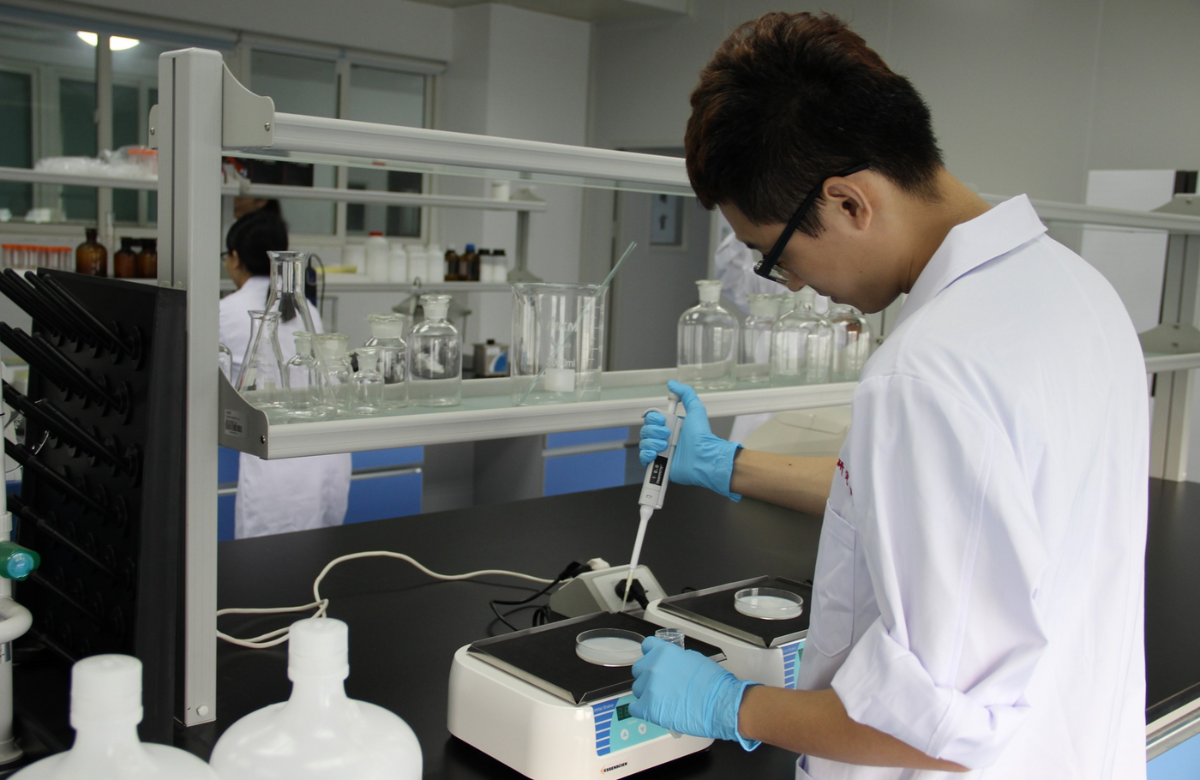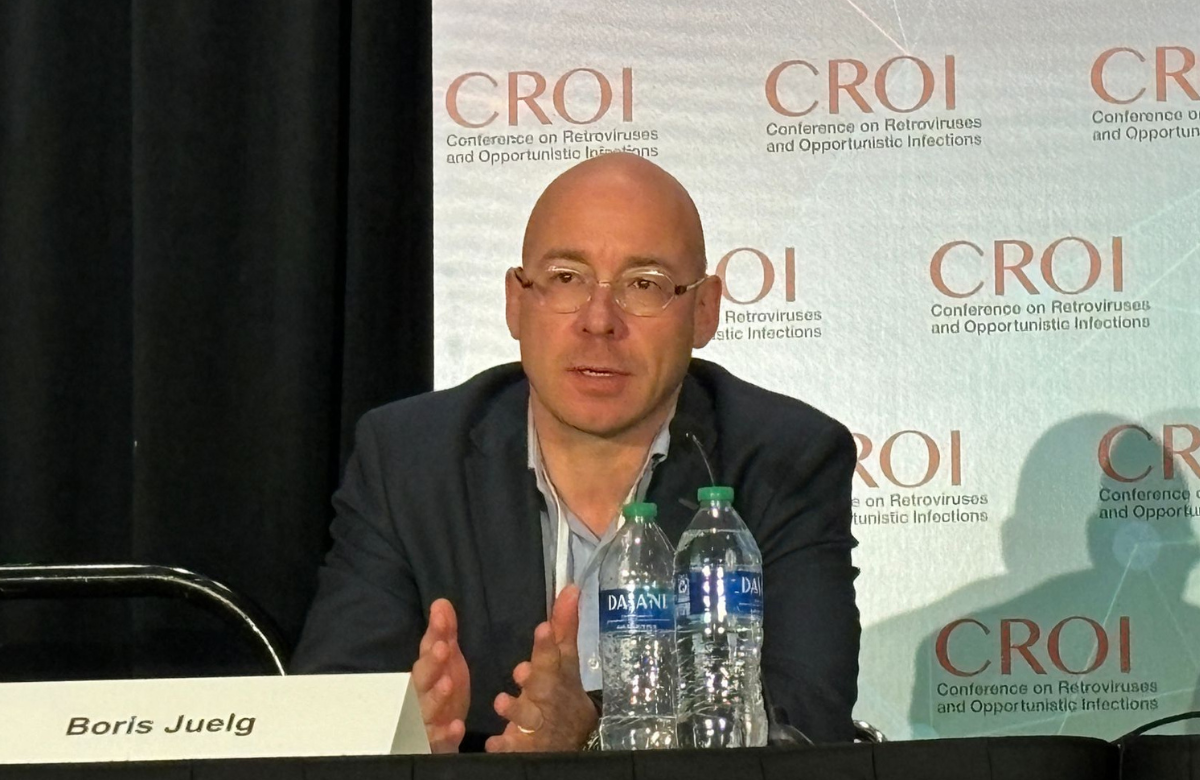Once-weekly antiretrovirals on the horizon

The new agents have undergone phase 1 studies, which establish appropriate dosing and check for serious side effects. It can take three to five years to complete the next phases of testing, which establish efficacy, dosing and safety. The antiretrovirals presented this week won’t be available in the near future, but they do offer an indication of the direction of the antiretroviral drugs market – less frequent dosing, for both treatment and PrEP.
MK-8527, a new nucleoside reverse transcriptase translocation inhibitor is being developed by Merck as a once-weekly drug for HIV treatment and a monthly drug for PrEP.
Two phase 1 safety and efficacy studies involved 37 people with HIV who had not previously taken antiretroviral therapy (ART). They tested the virological efficacy of five different doses (0.25mg, 0.5mg, 1mg, 3mg or 10mg) seven days after the administration of a single dose.
Viral load reductions ranged from:
- -0.80log at the dose of 0.25mg
- -1.39log at 0.5mg
- -1.21log at 1mg
- -1.66log at 3mg
- -1.39log at 10mg.
Two studies in people without HIV tested the pharmacokinetics of single doses and multiple doses. Drug-related adverse events were mild or moderate.
In one, 34 people received single ascending doses from 0.5mg to 200mg. Doses of 5mg and above resulted in concentrations above the threshold for antiviral activity against wild-type HIV-1. In the other, four groups of eight people received three doses of MK-8527 at one-week intervals or a placebo, from 5mg to 40mg. After the third dose, the half-life of MK-8527 ranged from 216 to 291 hours depending on the dose, leading researchers to conclude that the pharmacokinetic profile supports once-weekly dosing, and possibly dosing at longer intervals.
The second antiretroviral, GS-1720, is a once-weekly integrase inhibitor taken orally, being developed by Gilead Sciences.
In a phase 1a study, ascending doses up to 1350mg were assessed for tolerability and pharmacokinetic half-life in eight people without HIV. After a single dose of 450mg, it took a median of 9.4 days for the drug concentration to fall by half, supporting once-weekly dosing.
A phase 1b study tested four doses of GS-1720 (30mg, 150mg, 450mg, 900mg) for safety and antiviral activity in people with HIV. Each dose was tested in seven participants.
Viral load reductions at day 11 ranged from:
- -1.74log at the dose of 30mg
- -2.18log at 150mg
- -2.44log at 450mg
- -2.37log at 900mg.
All participants who received doses of 450mg or 900mg experienced viral load reductions of at least -1.5log. No serious drug-related adverse events (grade 3 or above) were reported.
Later at CROI 2024, results will be presented for a weekly dual therapy combination that is slightly further ahead in the clinical trials process. Islatravir and lenacapavir are each taken as a pill every seven days in this small phase II study.
HIV diagnoses fall in US states with high PrEP coverage

Uptake of PrEP (regular medication to prevent HIV) has increased steadily in the US since it was first approved in 2012. An estimated 363,957 people used it in 2022. At a population level, the greatest impact is seen when those who most need PrEP, such as gay and bisexual men who have condomless sex, are prescribed it and use it consistently.
Sullivan and colleagues looked at US PrEP prescription and pharmacy refill data from 2012 to 2021. They considered the proportion of PrEP users per 100 people who meet the Centers for Disease Control and Prevention (CDC) indications to use PrEP – providing an estimate of PrEP coverage based on need.
For each state, they considered yearly percentage changes in HIV diagnosis rates and compared them to PrEP coverage data.
While some areas, such as Washington DC, saw large percentage drops in the estimated annual change in HIV diagnoses between 2012 and 2021 (a decrease of 12%), others saw increases, such as West Virginia (an increase of 11%).
Average PrEP coverage ranged from a low of 4% in West Virginia to a high of 22% in New York. For states with higher levels of PrEP coverage to PrEP indications, there were decreases in HIV diagnosis rates. For those with the lowest levels, there were possible small increases.
While this type of analysis cannot prove causation, Sullivan said it does provide strong evidence for what is known as a 'dose-response relationship': as PrEP coverage goes up among those who most need it, HIV diagnosis rates consistently go down. Importantly, this relationship was seen independent of viral suppression rates.
In states with high coverage, access to PrEP through drug assistance programmes and state-level Medicaid expansion remains a crucial factor.
Dolutegravir distribution may affect its ability to suppress HIV reservoir

Researchers looked at tissue samples collected as part of a study through which people with HIV approaching the end of life agreed to donate samples after death.
Drug distribution analysis looks at how well a drug reaches target sites in the body. In the case of HIV, drug distribution is good when the drug reaches optimal concentrations in immune tissues and HIV reservoirs.
All six donors were on dolutegravir-based ART. Within six hours of death, 22 tissue samples from different body sites were collected from each person and analysed.
The central nervous system (the brain and the spinal cord) is separated from the rest of the body by the blood-brain barrier, which makes it difficult for many drugs to reach. In this study, drug concentrations in the brain and the spinal cord were lower than in other body sites, but concentrations across different parts of the brain were evenly distributed. The intestines and spleen – where a large portion of the immune system resides – were found to have high drug concentrations.
Although dolutegravir is very effective at suppressing HIV, variability from one person to another in its concentrations may affect how well it reaches and suppresses the virus in its reservoir in the central nervous system. This was a small study, but the analysis seems to show that tissue drug concentrations vary considerably between individuals.
If one antibody won’t work, how about three?

BnAbs have been the focus of HIV treatment and prevention research for around 15 years. These protein molecules can kill viruses – neutralising them – but HIV is too fast for them, mutating and developing resistance. The focus of bnAb research has been to find a way to introduce them earlier, while they still work against HIV.
Single bnAbs can also be vulnerable to resistance, so it was theorised that a triple combination might work.
In the latest study, Dr Boris Juelg and colleagues from the Ragon Institute in Massachusetts worked with 12 people with HIV, who stopped ART and instead received a triple bnAb combination intravenously every four weeks until week 20. The participants were then monitored for at least another 20 weeks and, if their viral load rebounded to over 1000, restarted on ART.
Of these, four and possibly five people (one was lost to follow-up) maintained undetectable viral loads off any ART to the end of the study period, more than six months after their last bnAb injection. Another five study participants experienced viral rebound, but not until 4 to 6 months after their last bnAb injection. Two people had early viral failure related to resistance.
In response to these data and the sometimes disappointing findings from other bnAb studies, some conference delegates were critical. The UK’s Dr Laura Waters questioned the ethics of not testing participants in advance for pre-existing resistance. Ugandan activist Moses Supercharger questioned the feasibility of treatments that would require refrigeration and expensive efficacy assays that are not available in many parts of Africa. Dr Ricky Hsu of the AIDS Healthcare Foundation in New York also questioned the resources being poured into bnAbs, given the need for expensive assays.
Broadly neutralising antibodies may be partners for long-acting antiretrovirals

Professor Joseph Eron of the University of North Carolina at Chapel Hill presented results from a phase 1b study of lenacapavir plus teropavimab and zinlirvimab, two antibodies being developed by Gilead Sciences.
Lenacapavir is an HIV capsid inhibitor approved for treatment-experienced people with multidrug-resistant virus. It is administered by injection every six months. Both bnAbs were modified to extend their half-life and enable less frequent dosing.
At the start of the study, after discontinuing their existing ART, all 20 participants received an oral dose of lenacapavir, two subcutaneous injections of lenacapavir and an intravenous infusion of teropavimab (30mg/kg). In addition, they were randomly assigned to receive either 10mg/kg or 30mg/kg infusions of zinlirvimab.
Initial results were presented at CROI 2023. Lenacapavir, teropavimab and zinlirvimab remained well above therapeutic levels, and 90% of participants in both dose groups maintained viral suppression for six months. Treatment was safe and generally well tolerated.
Participants had only been able to join that study if resistance tests showed that their virus was sensitive to both teropavimab and zinlirvimab, and over half of potential participants were not. A new study enrolled 11 people with sensitivity to either teropavimab or zinlirvimab – but not both.
One person was found to have hepatitis B and was excluded from the analysis. Ten people were randomly assigned to the same two regimens. At 26 weeks, they restarted their baseline ART. At that point, eight of the ten maintained viral suppression. But the response differed in the two zinlirvimab dose groups. Only two of the four people who received the lower dose still had an undetectable viral load, compared with all six of those who received the higher dose. Treatment was well tolerated.
One participant in the lower dose group who was sensitive to teropavimab was diagnosed with COVID at the time of viral rebound and regained suppression after resuming oral ART. The other was sensitive to zinlirvimab and continued to have a low-level detectable viral load after resuming oral treatment. No treatment-emergent resistance was detected.
All participants in the higher zinlirvimab dose group maintained viral suppression for six months, suggesting that “more inclusive bnAb sensitivity criteria may be appropriate for treatment studies with [lenacapavir+teropavimab+zinlirvimab] when higher bnAb concentrations are maintained,” the researchers concluded.
This combination is now going to a phase II trial.
In the second study (phase II), Professor Babafemi Taiwo of Northwestern University in Chicago and colleagues evaluated the safety and efficacy of long-acting cabotegravir plus a bnAb called VRC07-523LS. It was also modified to extend its durability.
In step one, the participants took oral cabotegravir plus two NRTIs for four weeks. Those who maintained viral suppression proceeded to step two and received long-acting cabotegravir injections every four weeks and 40mg/kg infusions of VRC07-523LS every eight weeks. After 48 weeks, they resumed a standard oral regimen. A total of 71 people started and 60 finished step two.
All but five participants maintained viral suppression at 48 weeks. Treatment was generally safe and well tolerated.
The combination of a single long-acting bnAb plus injectable cabotegravir “has potential for maintenance of HIV-1 suppression, but will require a better understanding of the mechanisms underlying breakthroughs,” the researchers concluded.
